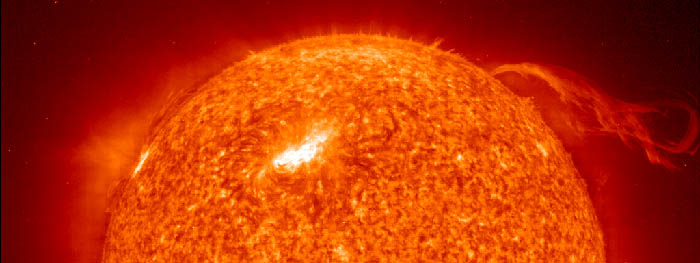

We have come to study the sun at a period somewhere
between the minimum and maximum of solar activity. In our observations,
using binoculars to project the sun onto a white surface, we have been
unable to clearly see the tiny sunspot pairs. Yet in our research,
we are coming to understand the birth of our closest star and its
cycles of activity. Composition, structure, temperature, and
age all play a role in the manner in which our sun produces and emits light
and energy. We have combined our individual research
into an overall portrayal of stellar evolution and present day solar motion.
In the five weeks, as the sun shows its face
more often, we will expand on our solar observations. Using a synthesis
of telescope observation and solar projection through binocular lenses,
we hope to make first hand observations of solar activity. We can
then compare our findings with the images provided by Learmonth Solar Observatory,
Australia, and Hollman Air Force Base, New Mexico.
In the days before the Science Fair, we plan
to discuss the activity observed from the telescope photos. We will
focus on the movement of sunspots and solar flares, taking into account
the rotation of the sun. For part of our Science Fair presentation
as well as our class presentation, we will create a sequence of solar images
spaning the month of April (one complete rotation of the sun).